Destined to be different: Dynamic advice to boost your brand differentiation
| August 5, 2020
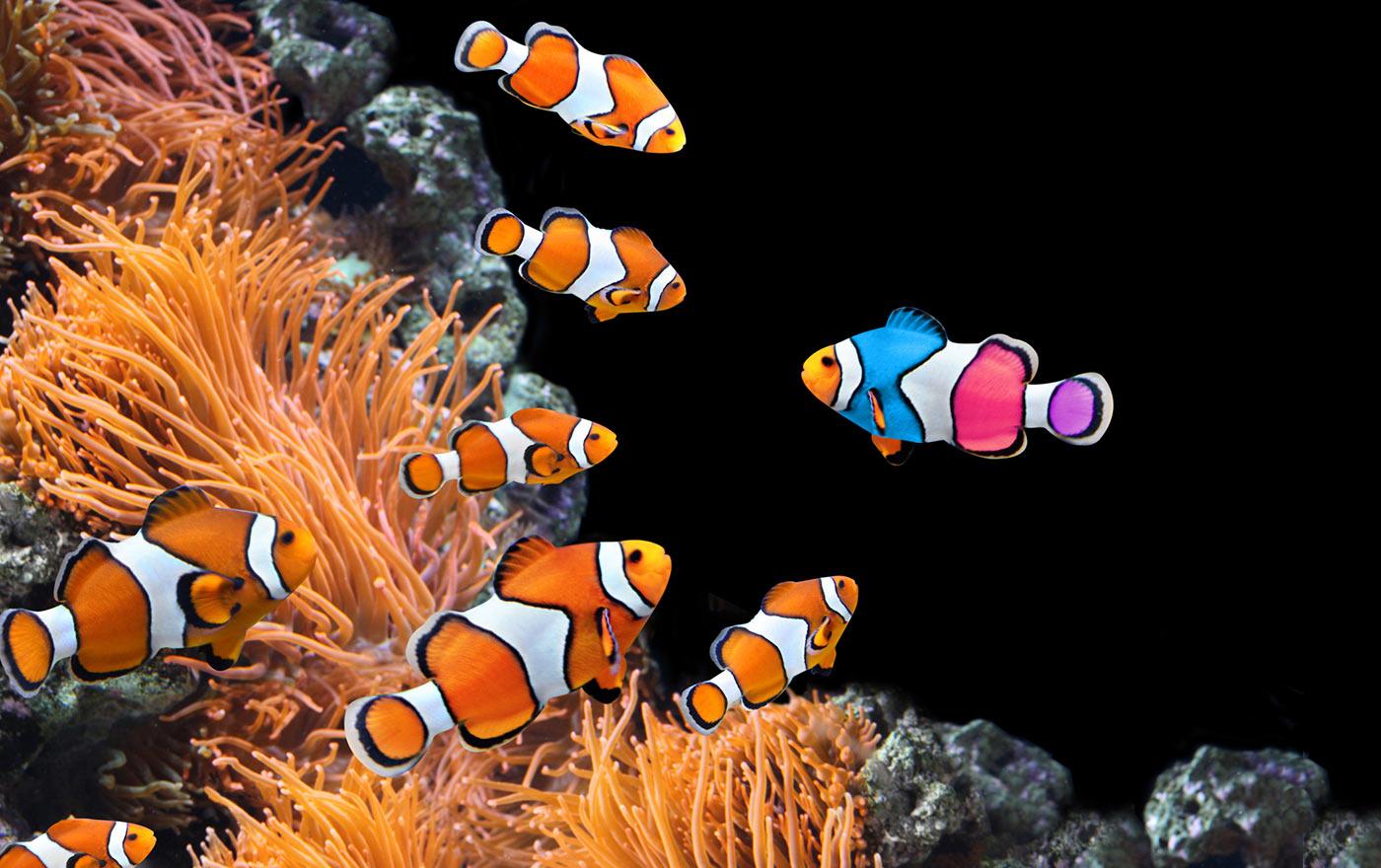
Think different.
This advertising slogan, used by Apple, is representative of why brands succeed or fail. It doesn’t say think safe, same or normal – it says think different.
All too often, we play it safe, copying the competition. This is not how successful brands go about their marketing strategies.
It can be scary to branch out on your own, away from the norm. There’s risk involved, but this is risk successful brands accept wholeheartedly.
Brand differentiation is achieved when brands are willing to take a chance, ignore antiquated traditions or the status quo and risk it. It’s about finding new ways to excite customers about your brand and what it can do for them.
Brand differentiation has the potential to do the following for your brand:
- Increase brand loyalty and brand advocacy
- Help you stand out in areas other than pricing, products or services
- Boost your brand recognition
This article is your stepping stone to success. It offers a chance to differentiate your brand using unique methods most haven’t heard of.
What is brand differentiation?
Brand differentiation is when a particular brand stands out next to all of its competitors. If a brand tries to achieve brand differentiation, they’ll be attempting to contrast from others in a positive manner. The goal is to achieve greatness through contrast – not to be different arbitrarily.
Essentially, brand differentiation as a business term means that a brand has found a way to be different than their peers in a positive way.
Here are some key components that typically make up this type of differentiation:
- Experiences
- Stories
- Values
- Exclusivity
- Characteristics/mascots/personas
Throughout your business journey, you’ll find plenty of ways to stand out from competitors. The key is to recognize when to do it and how to go about things to find success.
Even if your brand has to emulate another, it should do so with the attempt of being better, rather than being the same.
Finally, remember that being contrarian doesn’t always lead to positive brand differentiation – keep it within reason.
Why differentiation is so valuable to innovative brands
Think of the world of business like an academic decathlon. If you’re competing, chances are there’s a category you favor – for this example we’ll say it’s math. When the time comes for the math section, you need to capitalize.

Similarly, if you’re an innovative brand with a creative idea, you have to capitalize when the ‘math’ section arises. Brand differentiation is your ‘math’ section; your time to shine.
The reality is, chances are the competition has the same solution you do for customers. For example, Apple and Samsung both offer a smartphone that is roughly identical to others on the market.
However, Apple and Samsung are crushing the competition when it comes to global smartphone sales. In 2019, seven out of ten phones on the top ten global shipments list were Samsung/Apple.
The iPhone XR shipped 26.9 million units globally, while the Galaxy A10 shipped 13.4 million (statistics courtesy Gizmochina). This begs the question, if other brands have identical phones, why aren’t they selling any of them?
The answer to that question, and the key to success, then, is innovation.
Let’s now take a look inward. In what ways can each brand find to stand out in their branding?
You might notice a similar issue between your brand and its competitors – both offer the same service or product or solution to customer problems. It’s going to boil down to differentiation.
Learn more about differentiation and other methods in our comprehensive branding guide.
7 dynamic processes to boost your brand differentiation
There are many ways to stand out, but they’re definitely not equal. Some, in fact, are detrimental. So how do you narrow your efforts to effective methods? Consider the following strategies:
1. Focus on the magic of brand experience
As you’ll see later in my examples, it’s pretty clear that most brands who have strong differentiation also offer strong experiences.
There are many different ways to go about giving a memorable experience. One such way happened unexpectedly in a public place, thanks to the branding of Volkswagen.
In a public subway station, they set up the stairs next to the escalator to resemble keys of a piano, which made noise when people stepped on them.

The fun the people had on the stairs spread to those who only got to watch online, making the campaign a success by promoting the ideals VW wished while making a brand memory for many.
Similarly, look for ways to create your own brand experience. This is a chance to get creative, because the possibilities truly are endless.
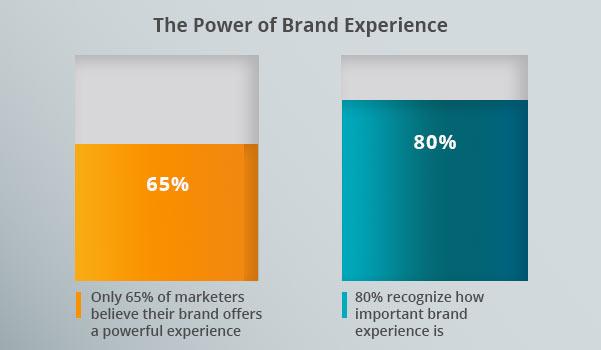
It doesn’t have to be an all-out, crazy event, either. Sometimes it’s as simple as a friendly smile on a product or the design of a building. Whatever it is, make sure it’s memorable.
2. Be exclusive without being exclusionary
There are a lot of strategies to make exclusivity work for your brand, from pricing, to luxury, to exclusion or clubs.
Take pricing, for example. Many brands have found ways to differentiate by raising their prices in relation to competitors. This can represent quality while standing out.
Next, consider the ways luxury gives an aura of exclusivity. This doesn’t always have to be associated with high prices.
“Luxury is attention to detail, originality, exclusivity and above all quality.” – Angelo Bonati
Sometimes the appearance of luxury illuminates exclusive emotions. Think about the way some products are packaged, for example.
Finally, sometimes the literal act of exclusion can help you stand out. Fast food companies notoriously limit special items arbitrarily, building hype.

A bar in New York City took this idea to new heights, placing a ‘secret’ entrance in their establishment, which is only accessible by phone in a tiny phone booth hidden away in the corner.
As you can see from the above examples, sometimes exclusivity doesn’t have to exclude at all to be successful.
3. Market uncustomarily, within reason
Using good judgment when differentiating prevents us from going overboard.
Unfortunately, many marketing campaigns don’t heed this warning, ending up with a strange advertisement that wasn’t memorable, or in some cases, was completely inappropriate.
Unfortunately there’s no definitive guideline to this concept. Your judgment will be tested, and hopefully, you make the right decision.
The idea is to be extreme without actually being extreme; turn heads without getting blocked from YouTube or television.
Laphroaig Whiskey went contrarian when they created a 3.5 hour advertisement on YouTube (3:34:00 to be exact).
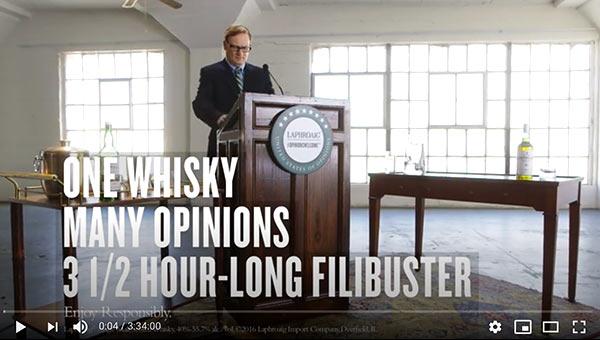
Most branded video advertisements on YouTube clock in at about one minute, making this video longer by 21,300%. Talk about extreme marketing!
Think of your own unique ways to buck the norm, but keep it within reason.
4. Tell a tale that shows your true colors
A brand story details how a brand came to be, highlighting the determination it showed throughout its history. The most successful brands have a relatable story that is told in a unique and creative way.
So, why is a strong story so important? Consider that two identical brands become completely different when one has a story filled with rich history, struggle and triumph.
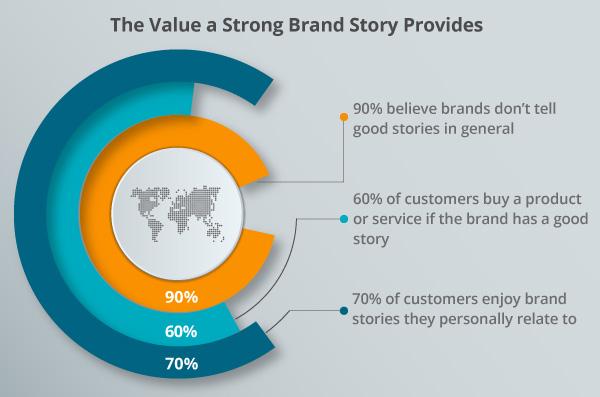
Also think about the ways audiences love to connect to stories. Storytelling is a large part of human history, bringing a wide range of people together in ways that other methods cannot.
Picture how much easier it is to identify with a brand when you hear their story and realize people who were involved in its creation are just like you.
Now, take this feeling and use it to build your own story to connect in similar ways to target markets.
A good brand story should:
- Highlight struggles and obstacles your brand faced
- Demonstrate your positive characteristics in some way
- Show you overcoming past obstacles
- Foreshadow how you’ll overcome future obstacles
A great example to check out is the Burt’s Bees chapstick brand, who tells a detailed, intimate story about Burt, the founder, directly on their website.

The reason this story is so effective is it’s extremely detailed, pulling back the curtain on his private life. There is no makeup artist or production team to spice up the story or pictures. It’s as if you’re looking at a personal scrapbook of Burt’s adventures.
Use this example to catapult the development of your story.
5. Look for ways to implement personification
Similar to the brand story, personification offers a chance to stand out, even when you’re selling the exact same product or service as competitors.
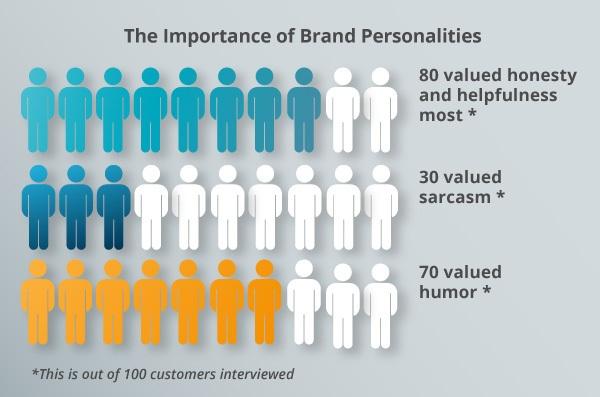
Consider ways to take a product or service you offer and give it human traits. The results are surprisingly effective, as audiences love to feel an emotional connection to brands.
M&M’s accomplished this with their marketing advertisements that cast their candy as living, breathing creatures who talked and told jokes.
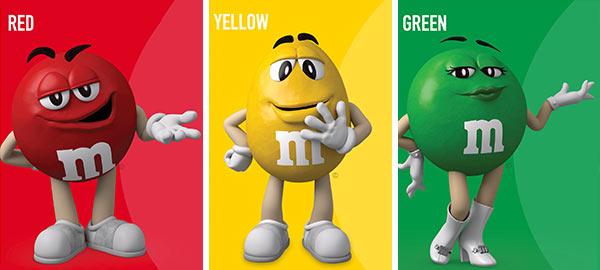
They may not have the only bite-sized chocolate candies, but they certainly stand out thanks to the personification of their product.
6. Build and show your expertise
“People who have expertise just love to share it. That’s human nature.” – David Baldacci
If two different people are offering the exact same service, whoever shows more expertise will be the one you choose.
Similarly, when brands compete, customers like to choose the one with more experience.
Of course, part of accomplishing this is by being an actual expert in your field, which we assume you are as a brand offering a service or product. However, not everyone knows this fact, and you need to show them somehow.
To do this, consider the following methods:
- Guest-blogging. Guest-blogging is a great way to show expertise, as you’ll get to show a lot of readers your knowledge about a specific topic. Keep in mind this should be done in addition to your own branding blog.
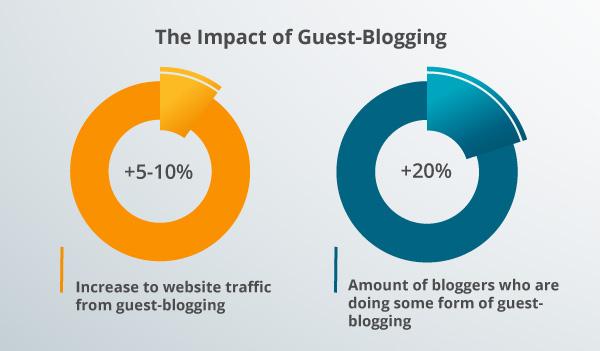
- Reference other experts often. In your own content, be sure to reference other experts. Chances are this will make your content seem more authoritative.
- Use PR. Nothing beats a well-crafted story of your brand on the news or other media outlets. It often creates a feeling of genuine authenticity for your audience.
Finally, be on the lookout for new ways to show your authority and expertise.
7. Target a new, niche demographic
Believe it or not, you’re not tied to a demographic forever. Sometimes, a pivot, even if slight, can help a brand stand out.
This is also a way for smaller brands to combat larger, more popular brands, as they can win over a niche demographic instead of going head-to-head for larger markets.
For example, the wireless carrier T-Mobile conceded its uphill battle against juggernaut Verizon, instead rotating their efforts towards capturing the millennial market.
By switching their focus to gen Y, T-Mobile was able to get a larger piece of the pie, even though they were targeting a smaller section.
Now, this doesn’t mean that you have to be an underdog to go after a niche market. No matter the level of success a brand shows, there’s always the opportunity to expand a target audience.
The above strategies offer a real chance to stand out and create legitimate separation from competitors. That said, it’s often important to see the potential successes that come along with differentiation. Let’s take a look at brands who did it best.
Examples of brands who nailed differentiation
These brands made a splash with their unique marketing campaigns and revolutionary products and services. Use them as an example to differentiate on your own.
1. Beyond Meat
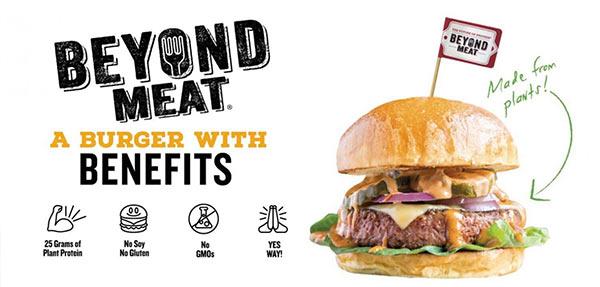
Meatless companies and products, despite having a hungry market (no pun intended), have never quite actualized mind blowing success. They’ve been stale, uninspired and unable to differentiate from each other to win the market over.
That all changed with Beyond Meat, thanks to innovative products and branding. Beyond’s products are now all over the globe, and they’re on the forefront of meatless brand success.
Their target market: People seeking meatless alternatives that offer similar taste and texture to meat.
How they differentiated: The most obvious way that Beyond Meat is in their branding, starting with their name. Beyond meat implies that the product is the next step in food consumption evolution.
Further, they noted the stagnated products other meatless brands were promoting, and innovated the idea to emulate meat in many ways, rather than to move away from it.
The result was a movement that many other brands tried to become a part of. Longtime chicken restaurant KFC even joined the party, co-branding a chicken-less chicken product.
2. Planet Fitness

There are two types of people who go to the gym: those who love going and those who hate it. If you are one of the many who hate going to the gym, Planet Fitness decided to make it easier for you to love it.
The typical gym is filled with things that discourage newbies and people who took a lot of time away from working out. Planet Fitness turned all that on its head by excluding members who turn gym culture into an unpleasant ordeal.
Their target market: Gym-goers who wanted to exercise without feeling the guilt brought on by stares from over-enthusiastic weightlifters.
How they differentiated: Planet Fitness is famous for restricting certain gym member types (shirtless, muscley men grunting and being intimidating to others), while promoting the idea that their specific gym is a ‘judgement free zone’. We won’t even fault them for misspelling ‘judgment’, because who knows, maybe they were trying to stand out?
3. Red Bull
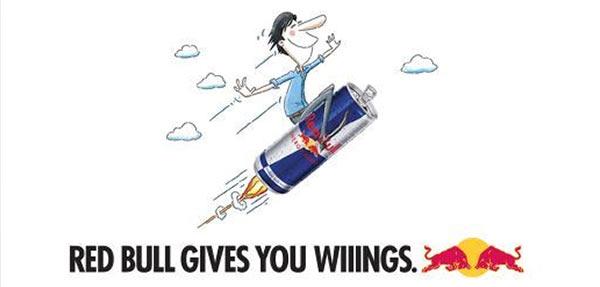
As the demand for energy drinks continues to increase, one thing remains the same: Red Bull is a popular option. There are many reasons for this, and continued differentiation is one of them.
Red Bull refuses to be just a beverage, pushing the envelope on what a brand can accomplish in terms of experiences. This, among other things, have helped it remain in a class of its own.
Their target market: People who want the taste of soda but with more caffeine.
How they differentiated: Red Bull has made lighthearted claims about its product’s efficacy (“Red Bull gives you wings”), held global events and even sponsored a space jump! Pretty impressive for an energy drink brand.
4. Oatly
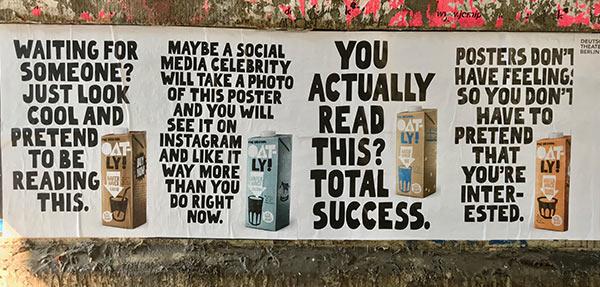
The market for milk has changed, opening a world of possibilities for new creations, such as soy, rice, almond, etc. This list of dairy-free milks is now bigger, thanks to Oatly and their oat-based milk products.
Apart from creating a new way to enjoy milk without the need for cows, Oatly is working to help the environment with their drink. This bigger purpose is evident all throughout their marketing campaigns.
Their target market: People who want a dairy-free alternative to milk but haven’t enjoyed the options available, such as rice, soy and almond milk.
How they differentiated: Oatly used creative branding and marketing to attract a niche demographic, as well as a whole new product to separate from the pack. They’ve even expanded their oat formula to be used in ice cream.
5. Unmade
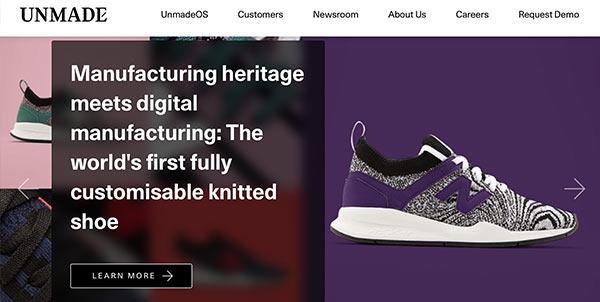
It’s been a bumpy ride for the world of fashion in the internet age. As clothing companies work to find new and effective ways to ship their products to customers, brands with creative solutions are coming out of the woodwork.
However, one such brand did something that no one else thought of: re-purpose unused clothing materials for custom orders.
Their target market: Initially, their market consisted of customers who wanted to purchase a custom piece of clothing from high-quality fashion labels. Now, they help retailers design and manufacture new clothing ideas.
How they differentiated: By finding purpose and value where there previously was none, Unmade stood out to a market that typically had fewer options in terms of creating and/or purchasing different clothing materials.
6. IKEA
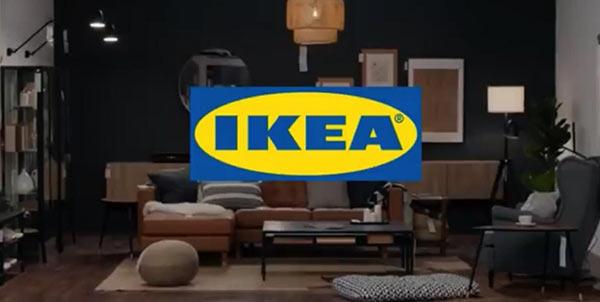
Furniture stores, at least until recently, were chocked full of stereotypes that for whatever reason all seemed to be true from one place to the next.
Customers expected basically the exact same thing whenever they needed to purchase some furniture, and their experience matched these expectations every time. That was until IKEA started growing in popularity, and managed to revolutionize how people think of the industry.
Their target market: Customers who crave new and exciting brand experiences when they buy furniture.
How they differentiated: IKEA stands out by offering low-priced products that somehow look extremely high-quality. They also are more than a furniture shop (they sell food in-store).
They’ve essentially gamified their products, making it quite an experience to assemble, which has become iconic.
Lastly, IKEA differentiates by understanding that no two customers are ever alike. This is evident from their guide to different bedroom layouts, which helped people find personalized furniture based on how they sleep.
For example, if someone slept with a pet in their bed, such as a dog, the IKEA guide would detail the best bedroom setup for that particular customer.
7. Etsy
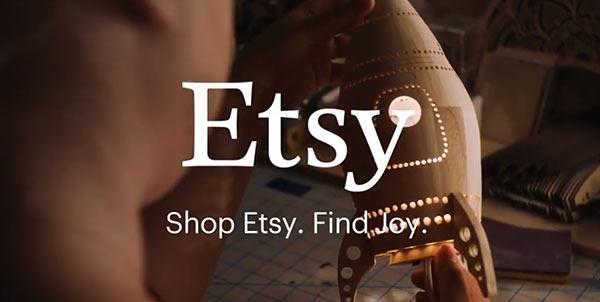
Upon first hearing about Etsy, it may seem like a strange idea as a company, since they functionally seemed like just another eBay or Amazon. However, it turns out there was quite a market for it, and they were able to capture a niche audience.
Etsy is similar to eBay or Amazon in that it connects buyers with sellers across the world, but it differs in the fact it is dedicated to promoting handmade items that aren’t found on other sites. Clearly, Etsy was doing something right, because Amazon eventually tried to enter the same market, creating a handmade section as well.
Their target market: People who had unique skills to make crafts that didn’t have a set place on a site like Amazon or eBay.
How they differentiated: By catering strictly to handmade crafts that customers wouldn’t find in stores anywhere or on other e-commerce sites. Etsy helped users find that very specific vintage handmade item they had been looking for all their lives.
Highlight what makes you great
Now that you have the above tools and strategies to stand out, it’s time to make things happen.
Somewhere out there, someone is looking for your brand – they just might not know it yet. Stand out in more ways than one to help them discover exactly what they need – you.

